Magical Tradition Revised
Author's Note: I set out to do a couple of things with this write-up. First and foremost, I wanted a format that will make it easy to introduce new Magical Traditions to the game. As much as I love the Magical Traditions book, a huge chapter for each Tradition is quite a bit to live up to. I also saw some ideas in some of the Traditions that I'd love to see applied to other Traditions. All of those goals have aligned to result in the following rule-set. Enjoy.
Contents
Merit: Magical Tradition (••)
Prerequisite: Occult 2, plus other Prerequisites based on the specific Tradition (described below).
Effects (Mortals): A mortal initiated into the secrets of a Magical Tradition gains a number of benefits, as denoted below:
- Resonance: Places where mortals have performed the rites of their magical tradition can actually alter the Resonance of those places. Individuals who participate in these rituals, items used in the rituals and the places where they are held more readily reveal themselves to fellow practitioners of that magical tradition. Divinations, aura perception and similar effects simply work more effectively when performed on such targets by someone who also practices that tradition: Instant checks gain a +2 bonus to the roll, while the Target Number on Extended checks is reduced by 2. Mortals with the appropriate Magical Tradition Merit using Thaumaturge Merits may reduce any penalties to their ritual roll by 2 as well.
- Sleepwalking: Mortals who possess the Magical Tradition Merit are considered Sleepwalkers for the purpose of witnessing the casting of Tradition Rotes by Awakened magicians. Mortals with this Merit may also purchase the full Sleepwalker Merit by paying 14 XP (rather than the normal 20 XP).
- Unseen Sense: Mortals who possess the Magical Tradition Merit are considered to have the Unseen Sense Merit, but only for the purpose of being aware of magics of their tradition. Mortals with this Merit may also purchase the full Unseen Sense Merit for Magic by paying 6 XP (rather than the normal 12 XP).
Effects (Awakened): A mage initiated into the secrets of a Magical Tradition gains access to a number of benefits, as denoted below:
- Tradition Rotes: Some rotes are designated as Tradition rotes, steeped in the magical symbolism of a mortal magical tradition. Such rotes may be cast in one of two fashions: as a normal Awakened rote, or as a Tradition rote. Any magician may use the rote as a normal rote. Casting a rote as a Tradition rote requires that the caster adhere to certain limitations, requiring the use of certain foci, casting it in a given environment or at a certain time, or while speaking a given language. Failure to cast the rote with these limitations in place does not prevent the magician from using the spell - it simply functions as a normal rote, with none of the benefits listed below.
- "Tradition Skills:" Tradition Rotes are always encoded in one of the Tradition Skills of the Magical Tradition he follows.
- "Sleeper Acceptance:" When the Storyteller is checking for a Paradox for a vulgar spellcasting, he does not add the +2 dice bonus for Sleeper witnesses.
- "Conditional Duration:" Tradition rotes benefit from the Fate 2 "Conditional Duration" modifier (see Mage: the Awakening, p.150), whether or not the mage knows Fate 2.
- "Spell Tolerance Mitigation:" The first Traditional spell cast on an individual does not count towards that target's Spell Tolerance.
- Resonance: The Tradition magics of an Awakened practitioner can alter the Resonance of a target, as described above.
- Ritual Leader: An Awakened mage with this Merit may gain a benefit from having mortals with the Traditional Adept Merit (see below) aid him in the ritual casting of Traditional Rotes.
Merit: Traditional Adept (• — •••••)
Prerequisite: Mortal, Magical Tradition Merit, Occult rating equal to Merit rating
Effects: A mortal initiated into the secrets of Magical Traditions can also learn the Tradition Rotes of that Tradition. Such an initiate may spend the normal XP to purchase a Tradition Rote, just as a Mage can. Though he cannot touch the Supernal Realms at all, he can aid the Awakened who can, helping them to anchor that power that is drawn down. When the Awakened magician casts a Tradition Rote as an Extended spellcasting, he may allow a mortal character with this Merit to assist him. The mortal must spend a point of Willpower to assist in such a fashion, and receives a penalty to his dice pool equal to the Arcana Rating of the spell being performed. Nonetheless, his successes are added as dice to the ritual leader's spell, as with a normal Teamwork effort.
Many such occultists believe that their own performances of those rotes have some kind of power. Anytime the mortal performs that rote ritually, taking at least one hour to do so, he regains a point of Willpower. If he scores an Exceptional Success, he regains two Willpower.
Advanced Magical Tradition Merits
The basics of practicing a magical tradition are expressed through the Magical Tradition Merit itself. The following Merits reflect an increased immersion in the magical tradition, learning to find the deep Supernal understanding reflected in the secrets of those traditions, and to perform feats of magic that less-enlightened magicians cannot. Each of these Merits is rated at least three dots; to purchase them, however, the mage's player need only spend 6 XP, effectively increasing the rating of the base Magical Tradition Merit, rather than purchasing a whole new Merit. These Merits increase in a similar fashion to the Fighting Style Merits, requiring the purchase of lower levels before higher ones may be gained.
The format for the Traditions is as follows:
- Name of the Tradition
- Prerequisites: This lists the full prerequisites, in addition to Occult 2, necessary for the purchase of the Magical Tradition Merit for this tradition.
- Tradition Skills: This list of five Skills denotes the Skills that all Tradition rotes are encoded in.
- Origins: A quick paragraph or two relating to the origins of the magical tradition.
- Praxis: The tradition's internal understanding of how its magic works.
- Correspondences: A listing of the sorts of foci, symbols, environments and times relevant to the practice of the tradition's magic, and often found encoded in its Tradition Rotes.
- Higher Mysteries: The additional secrets that come with deeper immersion into this magical tradition.
Appalachian Hoodoo
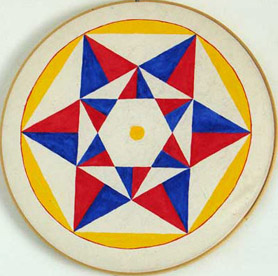
|
Prerequisites: X
Tradition Skills: X
- X:
- X:
- X:
- X:
- X:
Origins: X
Praxis: X
- X:
- X:
- X:
- X:
- X:
Correspondences: X
- X:
- X:
- X:
- X:
- X:
Higher Mysteries
- X (•••): X
- X (••••): X
- X (•••••): X
Entheogen Cults
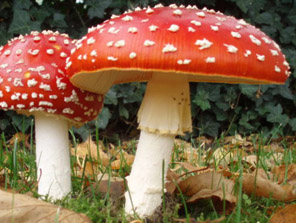
|
Prerequisites: X
Tradition Skills: X
- X:
- X:
- X:
- X:
- X:
Origins: X
Praxis: X
- X:
- X:
- X:
- X:
- X:
Correspondences: X
- X:
- X:
- X:
- X:
- X:
Higher Mysteries
- X (•••): X
- X (••••): X
- X (•••••): X
Hermetic Magics

|
Prerequisites: X
Tradition Skills: X
Origins: Founded mythically by the man known as Hermes Trismegistus, hermetic magic is practiced as a religion to some, with Trismegistus as their savior-magician figure. Others practice hermetic principles as a system of philosophy and magic, easily grafted to other religious systems.
Hermes Trismegistus is said to be “thrice great” because he has what is referred to as the Three Wisdoms: knowledge of alchemy, knowledge of astrology and knowledge of Theurgy. Through his understanding of these three practices, he came to comprehend the vital truths of the universe.
These truths are best described as a combination of panentheism and Monistic-polytheism, which teaches that there is The All, or one “Cause” of which we and the entire universe, are all part. It subscribes to the notion that other beings such as gods and angels, ascended masters and elementals exist in the universe.
The following is a quick summarizations of some of the precepts, philosophies and beliefs of hermetic thought.
- The All:Hermetic thought teaches that there is The All, and reality exists within the mind of the All. Though there are many gods, they are but emanations of the All, created by, existing within and alongside all other things in the All.
- Vibration: Furthermore, all of reality — from the basest dense physicality to the highest, most numinous spiritual states — are simply vibrations within the mind of the All. The only difference between the different states of physical matter, mentality and spirituality is the frequency of their vibration. The higher the vibration, the further it is from base matter.
- Contagion: The presence of one frequency of vibration can overwhelm other, lesser vibrations. Higher vibrations naturally overwhelm lower vibrations, causing them to vibrate faster, pulling them into more numinous states of being, but the sheer amount of low-frequency vibrations often overwhelm higher vibrations.
- Microcosm/Macrocosm: Because of the interconnections of the All, and the way Contagion works on Vibration, things which are similar are connected. The physical, mental and spiritual realities reflect one another, being all different frequency vibrations of the same thing (the self, essentially), and the self is the microcosm of the greater universal macrocosm.
- Sympathy: Through understanding of Contagion and Microcosm/Macrocosm, one understands the use of heavy symbolism in hermetic magic. Within the context of hermetic thought, the map is in fact the territory, and a simple lock of hair can serve as the microcosm for the macrocosmic individual. A certain color is not simply suggestive of a planetary influence, it is that planet, being the same principle on a different frequency, the microcosm of the planet, which is the macrocosm.
- Causation: Cause and effect. There is no such thing as random chance in hermetic philosophy. One thing is caused by another, in a series of ever-unfolding events, and many times causality plays itself out on levels and frequencies we cannot perceive. Thus, they seem random, but had we the perspective to see the full process in motion, we would understand it to be the simple inevitable unfolding of cause and effect.
- Reincarnation: Hermeticism maintains the existence of reincarnation, specifically the Greek ideal of metempsychosis, or the transmigration of the soul. Hermetic thought maintains that the Great Work is the slow alteration of the soul’s frequency, bringing it to higher and higher vibratory levels, in order to near the All, with the eventual aim of achieving that same frequency of vibration, thus ensuring a merging with the One.
- Morality: Hermeticism includes a distinction between good and evil, although they are specifically terms that relate to source: “good” relates to things of the Supreme Good, or God, while “evil” relates to things of demonkind. Mankind are possessed of a channel to both sources, who simultaneously attempt to exert influence into the world through men; this channel is called the nous, or the Divine Intellect. Hermetic magicians often refer to it as the Holy Guardian Angel as well, though the HGA is specifically the nous as it receives influence from the Supreme Good. Because Man is not God, he cannot actually share in the nature of “good,” though — he can simply be a channel for it in the world. Through contagion, electing to act as such a channel raises the individual’s own vibratory level to be closer to that of God, as part of the Great Work. That said, the One of hermeticism reserves no judgment for mankind’s choice to do evil. Hermetic philosophy maintains only one act that offends God: merely processing through life, obstructing others from doing or accomplishing good, and having no “children.” When hermetics speak of “children,” they speak of all the things that come out of creative endeavors. To exist in life without any creative impulses or activities, to effective be simply a consumer of such, is a sin.
Praxis: Hermetic magic is divided into three categories, or the Three Wonders. These form the core of Hermetic thought, and though they are presented as three separate kinds of magic, they are ultimately outgrowths in different directions of core hermetic thought. In particular, Awakened hermetics focus on one or more of these arts when learning to channel their Awakened lore through a hermetic lens.
- Alchemy: The act of transforming one thing into another is a powerful and important part of hermetic thought, and the alchemist applies hermetic principles to the Great Physical Plane and, through Sympathy and Contagion, gaining wisdom in the transmutation of the Great Mental and Spiritual Planes. In particular, the study of the so-called Pattern Arcana, Forces, Life and Matter, find a very solid grounding in hermetic alchemy.
- Astrology: The movement of the heavenly bodies, and their influences on the Great Mental Plane, comes under the study of hermetic astrology. Lesser occultists might speak of destiny or fate in relation to such powers, but it is vital to remember that hermetic philosophy disdains such things. Rather, the powers of the planets can alter the Great Mental Plane, which is where decisions are made – the first point of causality. Astrological, or celestial, magics generally flavor the study of Arcana such as Fate, Space and Time among the Awakened.
- Theurgy: Understanding and influencing the vibrations of the Great Spiritual Plane falls under the study of Theurgy. Involvement with spirit-entities of all kinds, understanding them as the spiritual reflection of entities on both the Great Physical and Great Mental Planes, permits the working of wonders. Awakened hermetics tend to focus the study of Mind, Prime and Spirit within these categories. In particular, those who study the summoning and binding of angels are likely to focus on the Prime Arcanum, while those who seek communion with the goetia focus on Mind. Both of these areas of study are likely to involve some measure of Spirit as well, though hermetic mages that study Spirit only are most likely to focus on either planetary or elemental spirits. Finally, technically necromancy is a form of applied Theurgy as well, with some hermetics studying the Arcanum of Death.
Correspondences: The following symbols are important parts of the practice of hermetic magic.
- Elements: Hermeticism uses the symbolism of the four classical Elements, though these are generally handy labels for different base frequencies of vibration. Specifically, they are the terms used to describe how disparate vibrations interact with one another, describing them in elemental terms for ease of comprehension. Where all the elements are merged into a single, harmonious vibration, with all extremes present yet balanced, there rests the quintessence, the Fifth Element of spiritual harmony. The building blocks of the Great Physical Plane, the elements are the means by which the physical world is altered. Fire represents activity, “hot” passions/emotions and the polarity between creation and destruction. Water is flowing, gentleness, “deep” passions/emotions and represents the ends of things, the polarity between beginning and end. Earth is solidity, stability, cold and darkness, representing the polarity between barrenness and fertility. Air is thought, intellect, imagination and the polarity between intellect and imagination. The so-called fifth element, however, which exists when the elements are in a state of perfect balance and overlap, is considered an aspect of the Great Spiritual Plane. Likewise, the elements are represented in the Great Mental Plane with the elemental correspondences for each of the planets.
- Planets: What the elements are to the Great Physical Plane, the powers of the planets are to the Great Mental Plane. Symbolic of mental states of mind and endeavors, as well as the slow unfolding of causality — the power by which Will changes the universe — planetary symbolism can be found at nearly every level of hermetic thought, from the alchemical attributions of certain metals and stones to the Planetary Courts of spirits invoked by hermetic theurgists. Of course, each planet also exists on all three Planes: its physical existence and elemental correspondence on the Great Physical, the archon intelligences and thematic concepts of each planet on the Great Mental, and the actual gods and spirits that make up the Spirit Courts associated with each of the planets on the Great Spiritual.
- Names: The third of the building blocks, which make up the vibrations of the Great Spiritual Plane. The universe was created with the Logos, the Word of Creation, and all words and names are descended from that First Word. Hermetic practice uses what are referred to as “the barbaric names,” strange, nearly unpronounceable words that are literal symbols of what the word is intended to accomplish. Likewise, what spoken words are to sound, sigils are to the eye. Usually, sigils seem to be random lines, though they form words when overlaid a pattern of letters (which is where they are generally derived). Hermetic practice involves the use of “vibrating” names, a type of chanting that involves setting up a sound vibration deep in the chest, with the purpose of aligning oneself with that principle: by feeling a physical sensation in the chest, focusing ones thoughts on the word and its meaning and actually speaking the word in question, the magician aligns himself on all three Planes with that principle.
- Correspondences: Because of the principles of Sympathy and Contagion, most hermetic practice involves the direct application of elemental, planetary or logos-based energies to a working through symbols of those principles. Colors, stones, herbs, incenses, oils, metals, animals, musical notes and magical tools all serve this capacity. When a hermetic uses an iron sword set with a red stone, this is more than mere theater — it is the literal wielding of the powers of Mars. Where he manipulates the sword on the Great Physical Plane, his mind focuses on the themes and purposes to the use of this Martial energy, and his spirit literally taps into that divine source, pulling it to his Will.
- Kaballistic Tree of Life: At some point in the past, hermetic practice absorbed the kabalistic Tree of Life and its sephira, finding in that Sigil a useful diagrammatic presentation of the three Planes of hermetic philosophy. Most hermetic magical practices do not actually use the Tree of Life or kabalistic techniques for the practice of magic — in pure hermetic thought, the Tree of Life is essentially a useful diagram for the organization of various symbols, including orders of angels and demons, deities, planets, colors and a variety of other correspondences, demonstrating how multiple layers of symbolism interact with one another. Of course, with the use of kabalistic symbolism, some magicians have embraced the practice of kabalistic magic as part of their workings, going so far as to consider them to be integral to hermetic practice.
- The Magical Circle: As Above, So Below, goes the hermetic axiom of Microcosm/Macrocosm. The entire universe is a great circle, in which the planets revolve. Thus, in order to affect the Great Circle of the universe, the magician need only create the Lesser Circle — a circular delineated space set aside for the purpose of magical workings. In this fashion, changes performed on the small scale will be reflected in the larger: the essence of magic. While not all hermetic magics necessarily take place within the magical circle, all rituals certainly should. A proper magical circle is protected by divine names, representing both the Greater Spiritual Plane which bounds the physical universe, and the divine powers the hermetic magician is invoking into his working.
- Elemental Weapons: Perhaps one of the strongest pieces of Supernal Truth that remains filtered into the hermetic tradition of magic is the use of magical weapons. The blade, the wand, the cup and the pentacle are all part of hermetic practice, representing a variety of elemental and planetary interactions. Hermetic practice does not usually include the mirror, though of course Awakened hermetics might possibly include one in their workings. In hermetic thought, the wand is the Will of the magician and associated with the element of Fire, the cup his Understanding and associated with Water, the blade his Reason, associated with Air and the pentacle his Physicality, associated with Earth.
- Other Magical Tools: In addition to these four essential so-called “elemental weapons,” hermetic magicians also use oil, for the act of consecration; a scourge, to produce agony and to levy out any punishments the magician may have coming to him on a microcosmic scale, rather than allowing such justice to accrue and play out in the macrocosm; the chain or cord, with which bindings are performed; the crown or circlet, a symbol of the hermetic magician’s lordship over the universe and his innate divinity; the robe, which symbolizes silence; the lamen (an amulet inscribed with the sigil name of a deity, angel or demon), which declared his allegiance with the powers of his working; his grimoire, in which the magician stores his correspondences, ephemeris and similar magical notations, as well as the rotes for Awakened magi; and a bell, the symbol of pure sound and the means by which the attention of spirits is garnered. A hermetic mage is also likely to use a shewstone, a stone used for scrying, or communion with spirits summoned.
- Jewelry: Hermetic magicians use a variety of jewelry in addition to the lamen. Wearing rings, bracelets and pendants of appropriate elemental or planetary metals and stones are useful for aligning the magician with the vibrations of that element or planetary power, and pieces of jewelry enscribed with sigils perform the same function for divine powers. Such items may even serve as the occasional sacrifice to a spirit of some kind, or the magician may wear them to imbue them with protections.
- Robes & Ritual Garb: As mentioned above, the magician’s robe serves to represent his silence and ability to keep secret the Mysteries. The robe is a symbol of shedding mundane existence and donning the mantle of the magician. Typically, robes are either all-black or all-white, though hermetic magicians may also utilize robes of different colors in order to align themselves with specific planetary or elemental powers. Likewise, sashes and mantles embroidered with specific sigils and names may be donned to align with divine Names and entities. A hood is representative of the magician’s intent and ability to turn inwards, and Awakened magicians sometimes find it useful to hood themselves before beginning an astral journey.
- Rituals & Timing: The use of ritual magic, generally combining the magical circle with ritual garb and jewelry, the manipulation of magical tools and elemental weapons along with consumables of particular correspondences, all serve to enact the magician’s Will on the universe.
Higher Mysteries
- X (•••): X
- X (••••): X
- X (•••••): X
Kabbalah
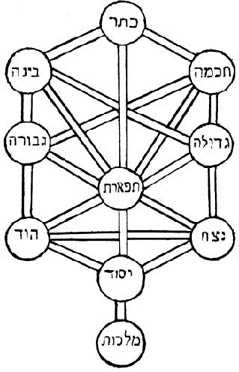
|
Prerequisites: Language (Hebrew), Occult 2 plus two other Tradition Skills 2, Specialty: Religion in Academics or Specialty: Kabbalah in Occult
Tradition Skills
- Academics: Most Kabbalists are avid scholars, able to quite prodigious amounts of rabbinical lore, theological concepts and holy scripture from memory. Kabbalistic rotes involving Academics usually take the form of mental recitations of theological concepts, pairing them in new ways as mnemonics for the magics invoked. Jewish meditation through the intonation or contemplation of Hebrew letters falls within this Skill as well.
- Crafts: Practice of kabbalism, while not quite as hands-on as many magical practices, still involves a number of different skills, most notably beautiful calligraphy and illumination, as well as the shaping of clay in homage to man's genesis - particularly in the creation of the Golem.
- Expression: The recitation of scripture is an important aspect of Kabbalistic practice. The universe began with the Word, and spoken words still play a powerful role in this tradition of magic.
- Investigation: The solving of ciphers, particularly in the form of gematria - rendering words into numbers and then comparing them to other words with similar sums - is involved in many Kabbalistic Rotes.
- Occult: Kabbalistic understanding of how the pure light of Ain Soph emanates down the Tree of Life in the Lightning Path, and how the soul of the dedicated may walk the Serpent Path back up the Tree form the core of Kabbalistic occultism.
Origins: The precise origins of Kabbalah are lost to history, though rabbinical lore claims that it either began with Adam or was passed to Moses on Mt. Sinai as an oral tradition by God when he gave the Hebrew people the Ten Commandments. How long it remained in the domain of Hebrew scholars is unknown - eventually, though, Hebrew and gentile scholars shared their deep philosophical concepts, and the symbolism of Kabbalah (if not it's true practice) entered the Western occult tradition. It has served over the years as a sort of master glyph, allowing symbol sets to be divided among the spheres that make up the Tree of Life in order to derive strong sympathetic interconnections between aspects of that symbol set. It is imbedded quite firmly in the consciousness of Western occultism at this point.
Praxis: The Kabbalistic praxis embraces a number of concepts.
- Meditation & Prophecy: Also known as "going within" or "being alone with oneself," the process of meditation generally involves the sublimated intonation or chanting of specific Hebrew letters, awakening the consciousness and finding the links between aspects of the world (the cause of prophecy).
- Gematria: Rendering the letters of words into numbers and then finding other words with similar sums, the practice of Gematria can reveal a variety of secrets in the world. Wielded by an Awakened will, the practice of gematria can do more than simply prove relationships; it can forge them, by "proving" two concepts are related by gematria and altering one to alter the other.
- Tree of Life: In original rabbinical Kabbalah, the Tree of Life served a variety of purposes: to demonstrate the path by which God's light manifested in the world (called the Lightning Path, as it zig-zags down the length of the tree like a lightning bolt), and to demonstrate the process of climbing up out of animalistic needs and urges to embrace divine being (called the Serpent Path, which reverses the Lightning Path). More occult-oriented Kabbalism takes this one step further, finding in the sephria a variety of correspondences used in sympathetic principles - using the color and number of a sphere, and invoking the angel of that sphere can assist in the invocation of that sephira's powers.
Traditional Kabbalism is more about the quest up the Tree of Life, climbing from one sephira to the next, becoming closer to God in the process. Occult Kabbalism utilizes this imagery in a variety of ways. Awakened Kabbalists have found an interesting facet to the typical embodiment of power - rather than the normal process of pulling power down the Watchtower, many Awakened Kabbalists envision their Watchtower as the Tree of Life, pulling power down the Lightning Path and allowing it to "ground out" in the sephira appropriate to their spell.
Correspondences: Kabbalistic magic uses a number of correspondences, as follows.
- Tree of Life & the Sephira: The sephira are the ten points on the Tree of Life, which serve as the points of manifestation for the ineffable power of God on its way down the Tree from Kether, each stop allowing God to manifest in a new and different way, each less numinous than the last. Each of the sephira has an Arcanum, a Virtue, a Vice, an Archangel, a Color, a Number and a group of concepts associated with it that are brought to use in the creation of Tradition Rotes and the like.
- Malkut: Matter Arcanum; Virtue - Prudence; Vice - Greed; Archangel - Sandalphon; Color - Brown; Number - 10; Concept - Discipline, materialism, stagnancy.
- Yesod: Death Arcanum; Virtue - Fortitude; Vice - Sloth; Archangel - Gabriel; Color - Purple; Number - 9; Concepts - Perception, reception of ideas, security, the moon.
- Hod: Life Arcanum; Virtue - Hope; Vice - Envy; Archangel - Raphael; Color - Orange; Number - 8; Concepts - Glory of life, air element, names and languge, order and hierarchy, Mercury.
- Netzach: Spirit Arcanum; Virtue - Charity; Vice - Lust; Archangel - Haniel; Color - Green; Number - 7; Concepts - Primal urges, water element, Venus.
- Tipheret: Space Arcanum; Virtue - Faith; Vice - Pride; Archangel - Michael; Color - Yellow; Number - 6; Concepts - Balance of all things, interconnections between things in their proper places, unbrokenness and wholeness, "heart knowledge" that comes of experience, fire element, the Sun.
- Gevurah: Mind Arcanum; Virtue - Justice; Vice - Wrath; Archangel - Kamael; Color - Red; Number - 5; Concepts - Power, might, justice, destruction of the unworthy, protection of the worthy, revenge, cruelty, oppression.
- Chesed: Time Arcanum; Virtue - Fortitude; Vice - Gluttony; Archangel - Zadkiel; Color - Blue; Number - 4; Concepts - Creativity, authority, majesty, Jupiter, symbols of power and authority, moments of inspiration or enlightenment.
- Binah: Fate Arcanum; Virtue - Temperance; Vice - Sloth; Archangel - Cassiel; Color - Black; Number - 3; Concepts - Mother of all form and shape, sacred feminine and fecundity, Saturn.
- Chokhmah: Forces Arcanum; Virtue - Faith; Vice - Wrath; Archangel - Raziel; Color - Silver; Number - 2; Concepts - Divine masculine principle, progenitors of the universe, stars of the Zodiac.
- Kether: Prime Arcanum; Virtue - none; Vice - none; Archangel - Metatron; Color - White; Number - 1; Concepts - Divinity, Ascension, the Prime Mover, Wisdom, the Big Bang, unity.
Higher Mysteries
- Harmonious Magic (•••): When casting a spell that fulfills the nature of that Arcanum's sephira, the mage may reduce any Paradox incurred by one. This applies to any spontaneous magic or Tradition Rotes for Kabbalah.
- Invocation of the Sephira (••••): The power of the sephira infuses the mage's workings with the corresponding Arcana. When the mage casts a spontaneous spell or Tradition Rote of Kabbalah upon himself, if the spell is from an Arcanum that reflects his own Virtue or Vice, he gains a +1 die to the spellcasting roll. Likewise, if he knows the Virtue or Vice of a target (generally garnered through Empathy rolls or Mind spells), he may gain the same bonus when casting on another.
- The Virtue of Man (•••••): When casting a spell that fulfills the caster's Virtue, not only does he regain all his Willpower, but he also gains a point of Mana as the highest Supernal Realms reward the use of their powers towards the purity of the soul's highest nature. When casting a spell that fulfills the caster's Vice, not only does he regain a point of Willpower, but he also reduces the Paradox dice of the spell by one, as the Abyss rewards giving in to the basest urges of the soul. This applies to any spontaneous magic or Tradition Rotes for Kabbalah.
Santeria
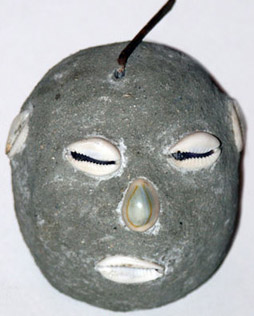
|
Prerequisites: X
Tradition Skills: X
- X:
- X:
- X:
- X:
- X:
Origins: X
Praxis: X
- X:
- X:
- X:
- X:
- X:
Correspondences: X
- X:
- X:
- X:
- X:
- X:
Higher Mysteries
- X (•••): X
- X (••••): X
- X (•••••): X
Taoist Sorcery

|
Prerequisites: Language (Mandarin or Cantonese), Academics 2, Crafts 1, Occult 2, Specialty: Taoism in Academics
Tradition Skills
- Academics: Used in the study of ancient scriptures and legal codes that formed the basis of ancient taoism.
- Crafts: Used in the creation of talismanic calligraphy, medallions, coin swords and similar items of ritual function for the taoist sorcerer.
- Medicine: The performance of acupuncture and the application of taoist principles to the human body.
- Occult: Understanding the various occult correspondences and courts of spirits, the flows of chi through the land as well as the basic rituals of taoist practice.
- Weaponry: Used in ritual duels, the practice of tai chi weaponry and battles with spirit beings.
Origins: X
Praxis: X
- X:
- X:
- X:
- X:
- X:
Correspondences: X
- X:
- X:
- X:
- X:
- X:
Higher Mysteries
- X (•••): X
- X (••••): X
- X (•••••): X
Templar Mysteries
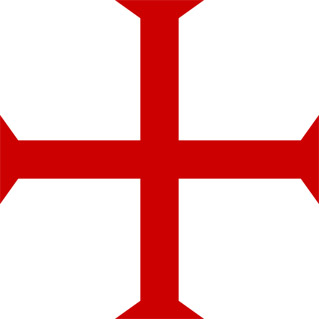
|
Prerequisites: X
Tradition Skills: X
- X:
- X:
- X:
- X:
- X:
Origins: X
Praxis: X
- X:
- X:
- X:
- X:
- X:
Correspondences: X
- X:
- X:
- X:
- X:
- X:
Higher Mysteries
- X (•••): X
- X (••••): X
- X (•••••): X
Theosophy
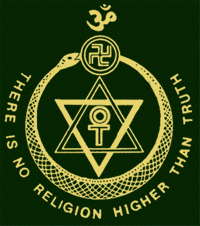
|
Prerequisites: X
Tradition Skills: X
- X:
- X:
- X:
- X:
- X:
Origins: X
Praxis: X
- X:
- X:
- X:
- X:
- X:
Correspondences: X
- X:
- X:
- X:
- X:
- X:
Higher Mysteries
- X (•••): X
- X (••••): X
- X (•••••): X
Witchcraft

|
Prerequisites: X
Tradition Skills: X
- X:
- X:
- X:
- X:
- X:
Origins: X
Praxis: X
- X:
- X:
- X:
- X:
- X:
Correspondences: X
- X:
- X:
- X:
- X:
- X:
Higher Mysteries
- X (•••): X
- X (••••): X
- X (•••••): X
Name of Tradition
Prerequisites: X
Tradition Skills: X
- X:
- X:
- X:
- X:
- X:
Origins: X
Praxis: X
- X:
- X:
- X:
- X:
- X:
Correspondences: X
- X:
- X:
- X:
- X:
- X:
Higher Mysteries
- X (•••): X
- X (••••): X
- X (•••••): X